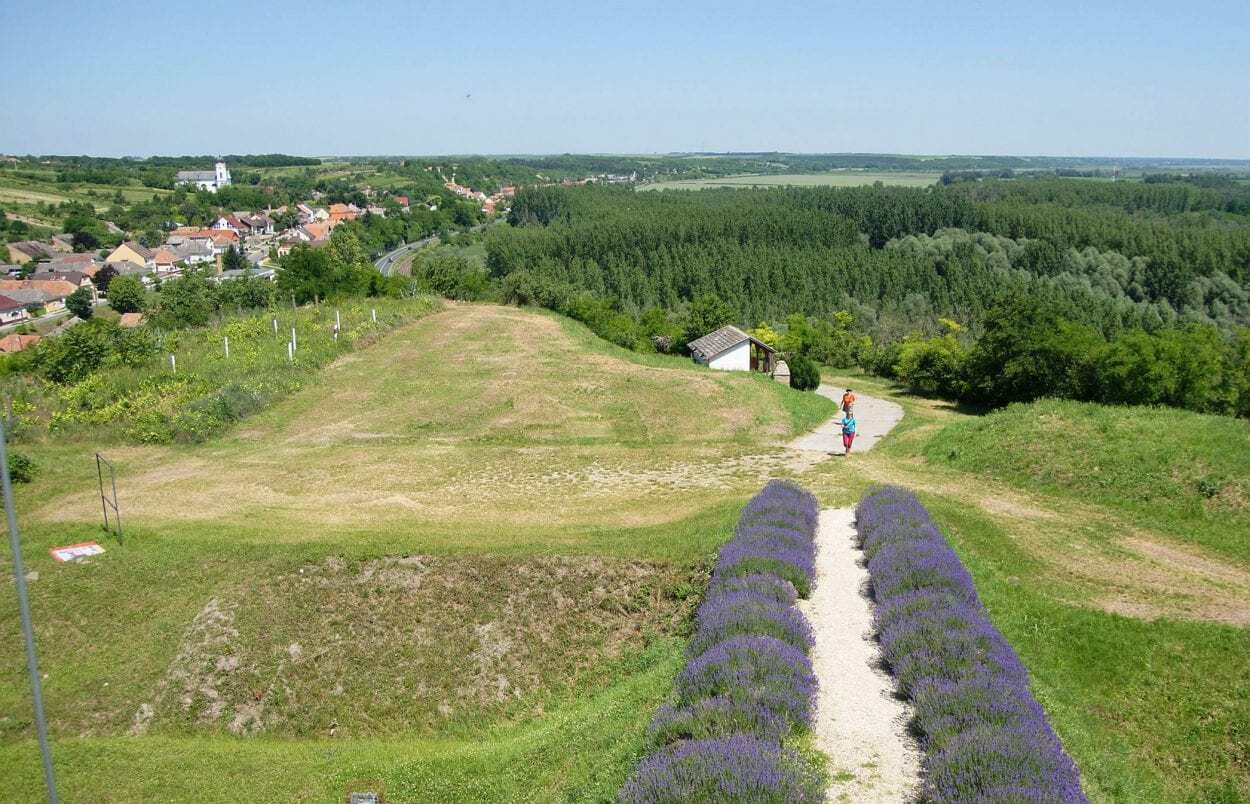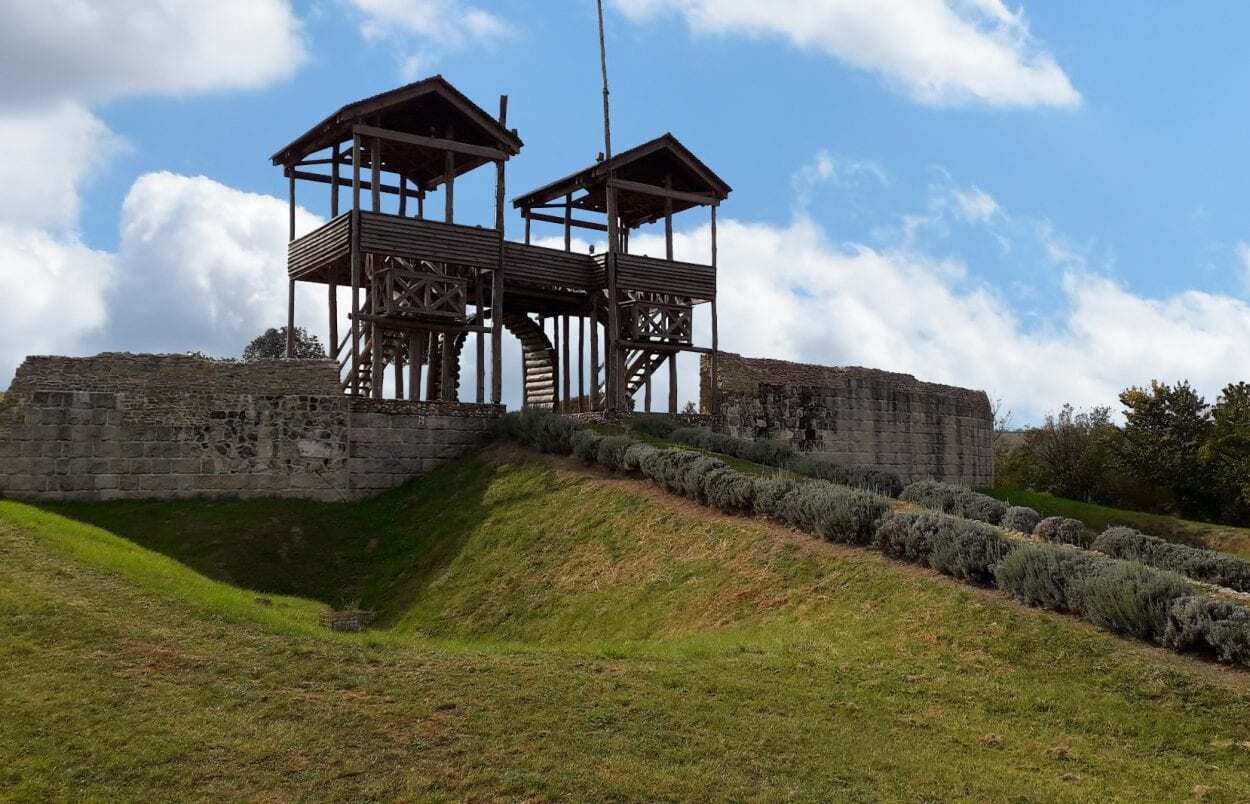Lussonium is an archaeological site and ancient Roman fortress constructed on the Pannonian Limes division of the Danubian Limes, located near modern-day Dunakömlőd in Hungary.
The Danubian Limes was the Roman military frontier along the route of the River Danube, that ran across modern-day Slovakia, Hungary, Serbia, Bulgaria, Romania, and the state of Bavaria, in Austria.
Unlike other frontier borders that saw the construction of extensive fortifications like Hadrian’s Wall and the Antonine Wall in England and Scotland, or the large earthwork ramparts and palisades on the Limes Germanicus, the Danubian Limes was reinforced with a network of numerous watchtowers, legion camps (castra) and forts (castella).
The discovery of decorated Italian Terra Sigillata and Terra Nigra pottery in situ suggests that Lussonium was built as a castra during the 1st century AD during the reign of Emperor Claudius or Nero.

The fort saw three major phases of construction, the first phase consisted of a wood and earth fort that underwent various renovations until the end of the Marcomannic Wars. The second phase, around the late 3rd and early 4th century AD replaced the wooden structures and defensives with a stone fortress. The third phase, by the late 4th century AD, levelled the stone fort and was replaced with a smaller fort with wooden structures and a large stone tower.
Lussonium was garrisoned by the Cohors I Alpinorum equitata, a cohort of between 500-1000 soldiers that were assigned to defend the frontier from the warlike Sarmatian people of the Jazygen who lived on the opposite banks of the Danube.
A vicus settlement (an ad hoc provincial civilian settlement) grew up around the fort (now buried beneath the modern-day village of Dunakömlőds) that probably served the nearby villa farms and Romanised indigenous villages located in the vicinity, as a centre for agricultural trade and commerce.
Lussonium continued to be occupied until the end of Roman rule in Pannania, when during the 5th century AD the fort was abandoned during the beginning of the migration period.
Header Image Credit : Várkapitányság Régészet







